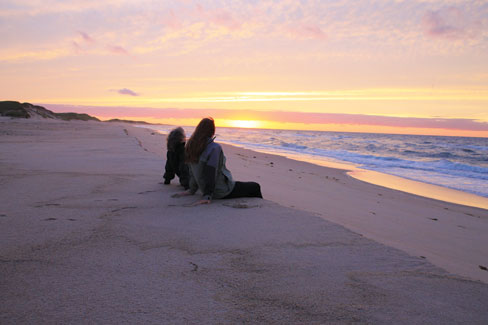
Wildlife
Do not disturb: Practicing ethical wildlife photography
Wildlife photographers on the thrill of the chase — and the importance of setting ethical guidelines
- 2849 words
- 12 minutes
This article is over 5 years old and may contain outdated information.
People & Culture

It was once a mythical place off Canada’s East Coast that few saw, let alone photographed. But the island where pirates used to pillage is now Canada’s 43rd National Park, and the public can finally view this nearly untouched environment.
This summer, Adventure Canada will help people check this remote location off their bucket lists with a cruise to Sable Island. A wildlife photographer’s dream, this island is one of the last places where wild horses run free and it has one of the world’s largest grey seal colonies.
To help shutter bugs prepare for this trip, or for other cruises to remote wildlife destinations, we asked award-winning Canadian photographer Michelle Valberg to share some of her tips on how to capture the best wildlife and landscape shots.

Q: What equipment should you bring?
A: More than anything, you need the appropriate lenses. For wildlife, you don’t always have the opportunity to get up close, so a longer lens is more appropriate. Having a wide angle option could be good for taking photos of landscape and shipwrecks.
Q: How do you carry everything?
A: When you’re hiking and looking for wildlife, you never know what you’re going to get, so you want to be agile and be able to get a shot quickly. Pack only what you know you can realistically carry when going out. When you are on these cruises, the number of things you can bring can be restricted. If you want to bring one, bring a monopod instead of a tripod. Make sure your equipment is protected, or in waterproof bags, just in case you get splashed on the smaller boats.

Q: How should people prepare for a day of picture taking?
A: Think about what camera settings you’ll need before you get on land. You might want to increase ISO sensitivity and pack extra batteries and memory cards. Make sure they’re all accessible and easy to get to. You could get there and see horses and then they’re gone in a minute. For wildlife, there’s no prediction on how they’ll act. That’s part of the anticipation – getting to know their patterns and behaviour.
Q: How should you capture photos throughout the day?
A: Take a lot of shots. A horse or any animal may change their position or start to run. A seal could pop out of the water. You need to be constantly anticipating. Use continuous shutter mode on your camera or shoot at a higher shutter speed. That way, you’ll have many shots to choose from. Look for colour and movement. Keep a camera ready to go.

Q: How about taking pictures near wildlife?
A: Always be respectful. Stay quiet and walk slowly with no sudden moves. Maybe approach four feet at a time and see if the animal is reacting to you. They could get used to the idea of you being around. Or they could run away, or even charge you.
Q: What about lighting?
A: The magic hours are early morning and late day for both landscape and wildlife, but you don’t necessarily have the option to head out at these times on tours. Sometimes, you just need to work with the position you are in, so being mindful of the direction of the sun or changing your own position could still help you get a great shot.
Valberg is one of the photographers heading to Sable Island this summer. Visit Adventure Canada’s website for more details on the first and second cruises to Sable Island.
Are you passionate about Canadian geography?
You can support Canadian Geographic in 3 ways:

Wildlife
Wildlife photographers on the thrill of the chase — and the importance of setting ethical guidelines

People & Culture
Martin Gregus and Brittany Crossman are two nominees for the prestigious competition developed and produced by the National History Museum

Wildlife
This past summer an ambitious wildlife under/overpass system broke ground in B.C. on a deadly stretch of highway just west of the Alberta border. Here’s how it happened.

Wildlife
An estimated annual $175-billion business, the illegal trade in wildlife is the world’s fourth-largest criminal enterprise. It stands to radically alter the animal kingdom.